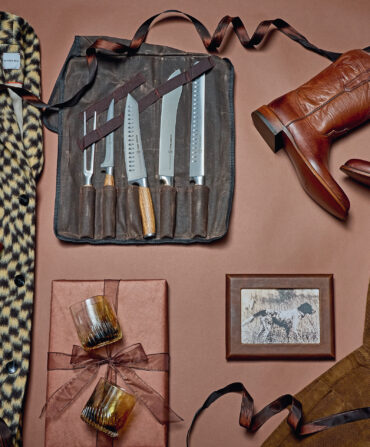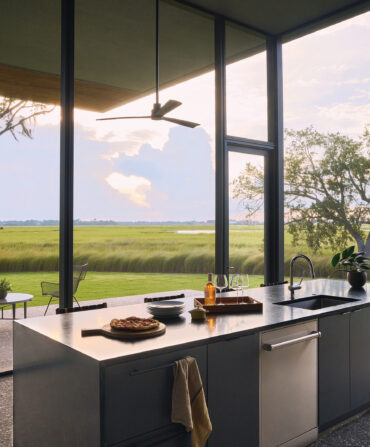Home & Garden
Meet the Couple Restoring Louisiana History
Along Bayou Chenal, in a corner of a parish near Baton Rouge, Jack and Pat Holden tend to an unrivaled tribute to the Acadian and Creole ways of life
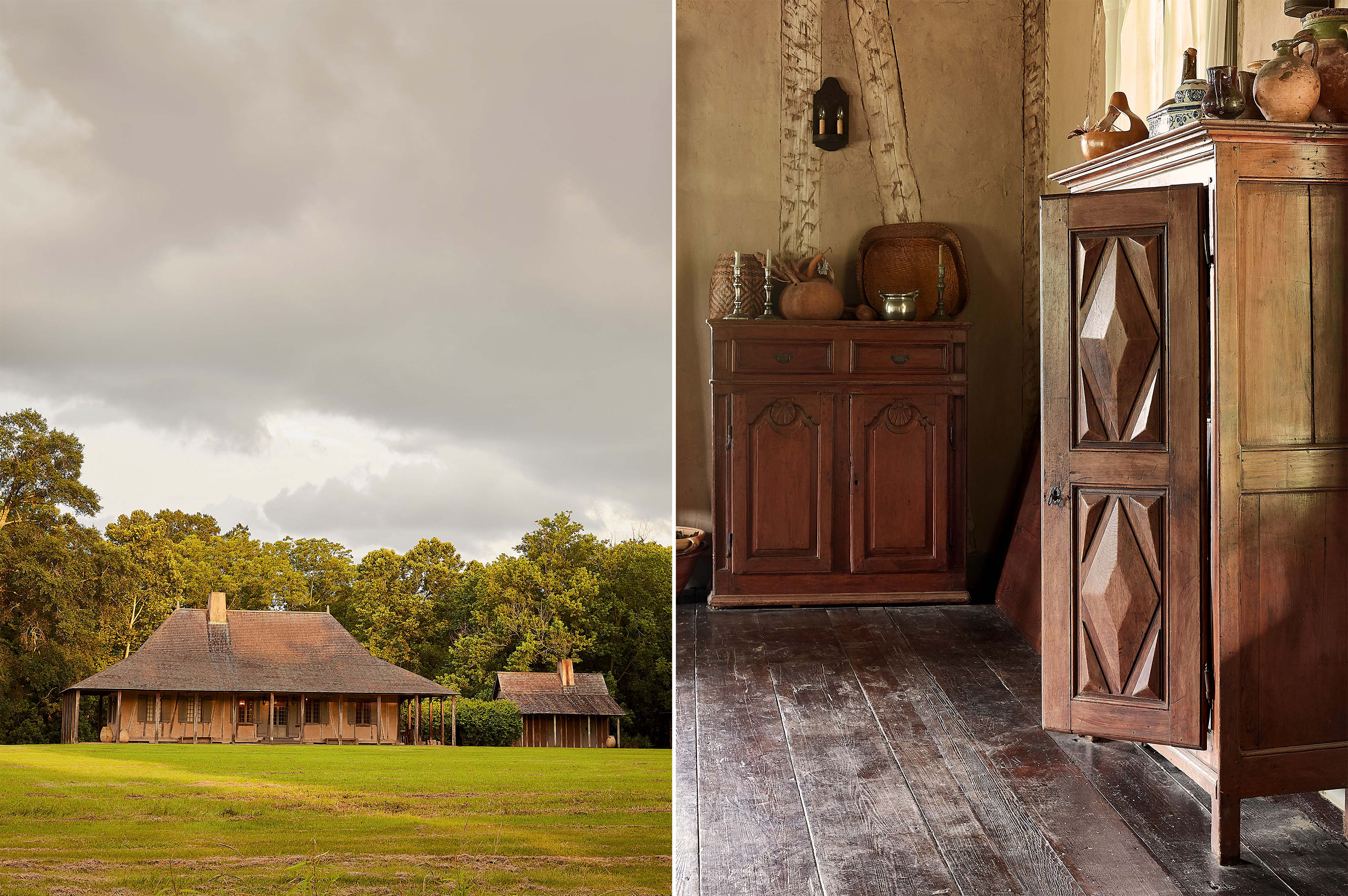
Photo: William Abranowicz
From left: Built in the mid-1700s, the LaCour House may originally have been part of a nearby fort; a carved armoire and a Canadian high buffet, atop which sit baskets crafted by Native Americans in Louisiana and French pewter candlesticks.
Off a winding Louisiana road, down an allée of spindly oaks, past an ancient split-cypress fence, grows a garden. There, Jack Holden points his pruning shears at the privet hedge lining a path, lilies springing as they please, and ferns seeking pockets of dappled light. “Here is my favorite, this rose,” Jack says, waving his clippers toward a tangle of vines and giant blushing flowers. Creole gardeners in the mid-1800s, he explains, cherished the Duchesse de Brabant rose, too. “I find plants in old neighborhoods, along country roads, and bring them back here.”
At each turn in this Eden lies another note of beauty, history, and delight, the funky, fruity smell of flowers swirling all around. Attempting to take everything in almost overloads the senses, and Jack’s wife of nearly sixty years, Pat, offers a solution. “This garden,” she says, guiding the way up to the porch, “is meant to be seen from above.” Viewed from atop, the plot rolls out into organized swaths of color. “We’ve kept the structure of a French parterre garden with lines and walkways,” she says. “But the rain and sun make these Louisiana plants go wild. They’re right at home here.”
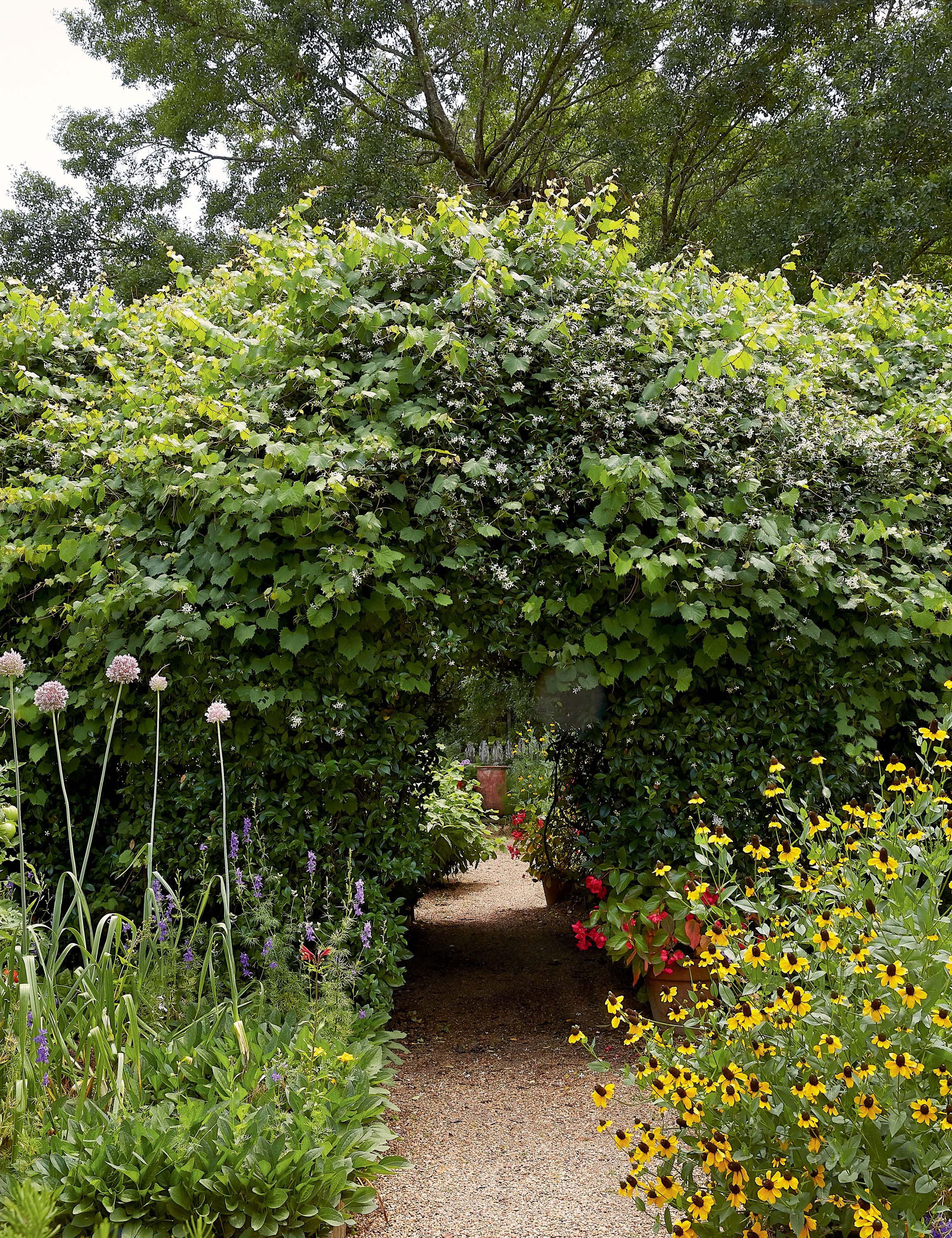
Photo: William Abranowicz
An arbor of muscadine and jasmine.
Pat and Jack understand the connection between French history and the wilds of Louisiana better than perhaps anyone. Not only have they rescued plants during decades of drives through the state, they’ve also salvaged early antique furniture, farm tools, dishes, even entire decaying buildings. The Holdens are treasure hunters of the highest order, preservationists of Louisiana’s memories. Their collecting focuses on the cultures of the Acadians—descendants of the French—and the mixed-race Creoles who long shaped Pointe Coupee, a southeastern parish near Baton Rouge.
“What they’ve done is beyond magical,” says Robert Leath, the chief curator at the renowned Museum of Early Southern Decorative Arts (MESDA) in North Carolina. Leath recently visited the Holdens’ estate, which now comprises four houses and ten outbuildings that include a bell tower, a barn, a stand-alone kitchen, and a pigeonnier. From time to time, he finds himself scrolling through pictures he snapped there, absorbed in cell-phone wanderlust. “The quality of not only the individual objects but their assemblage as a whole is unrivaled. It represents a lifetime of dedication, love, and care. Their collection is a national treasure.”
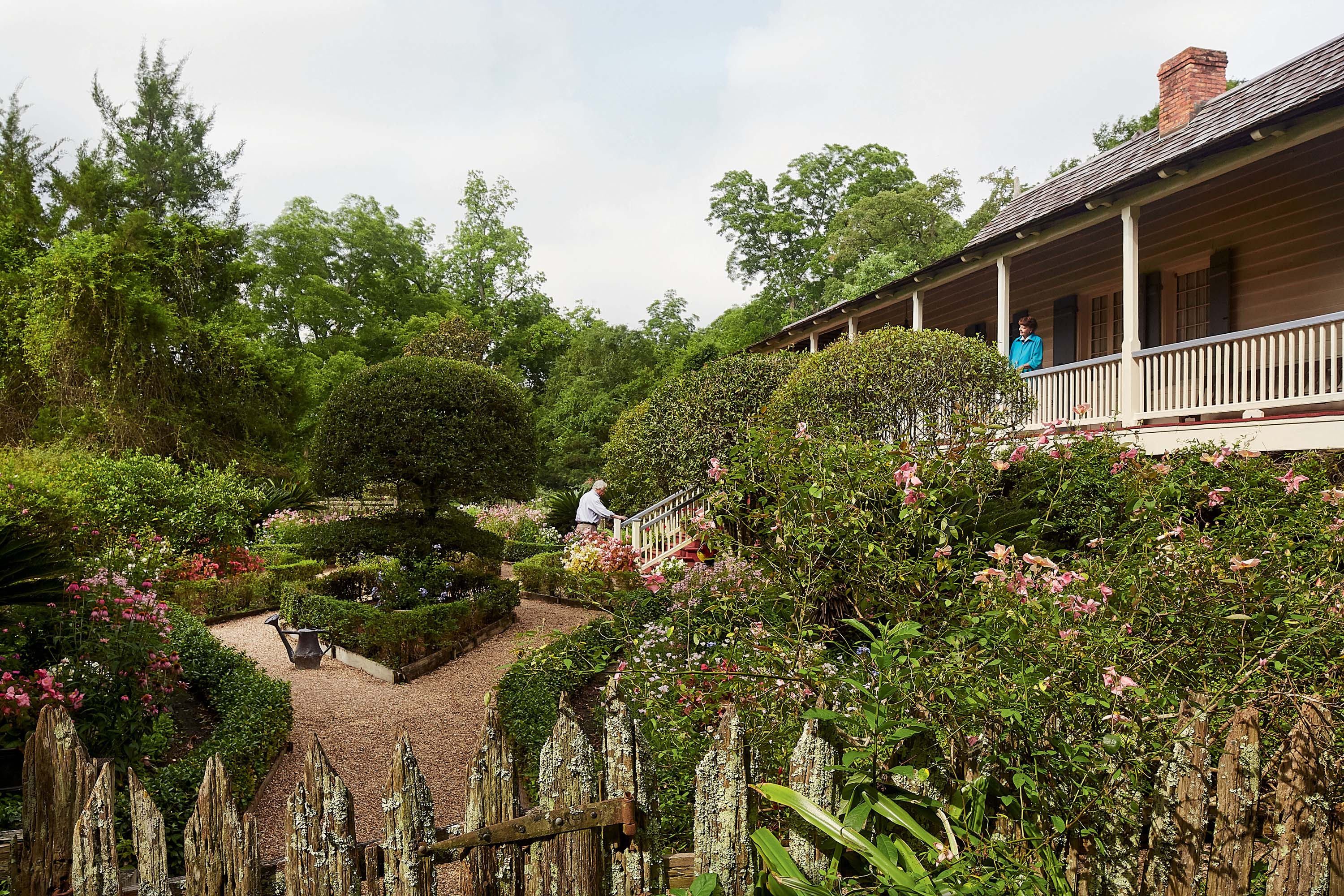
Photo: William Abranowicz
Owners Jack and Pat Holden with their French-style parterre garden at Maison Chenal.
The porch where Pat Holden stands fronts Maison Chenal, a West Indies–style Louisiana Creole house, circa 1790, that the couple moved here from eleven miles away when it was threatened with a teardown. From this vantage, she can see pieces of the rest of the property, with its Bayou House stuffed with Acadian furniture, a crawfish pond, and the LaCour House, a mid-eighteenth-century building that is one of the region’s oldest surviving structures.
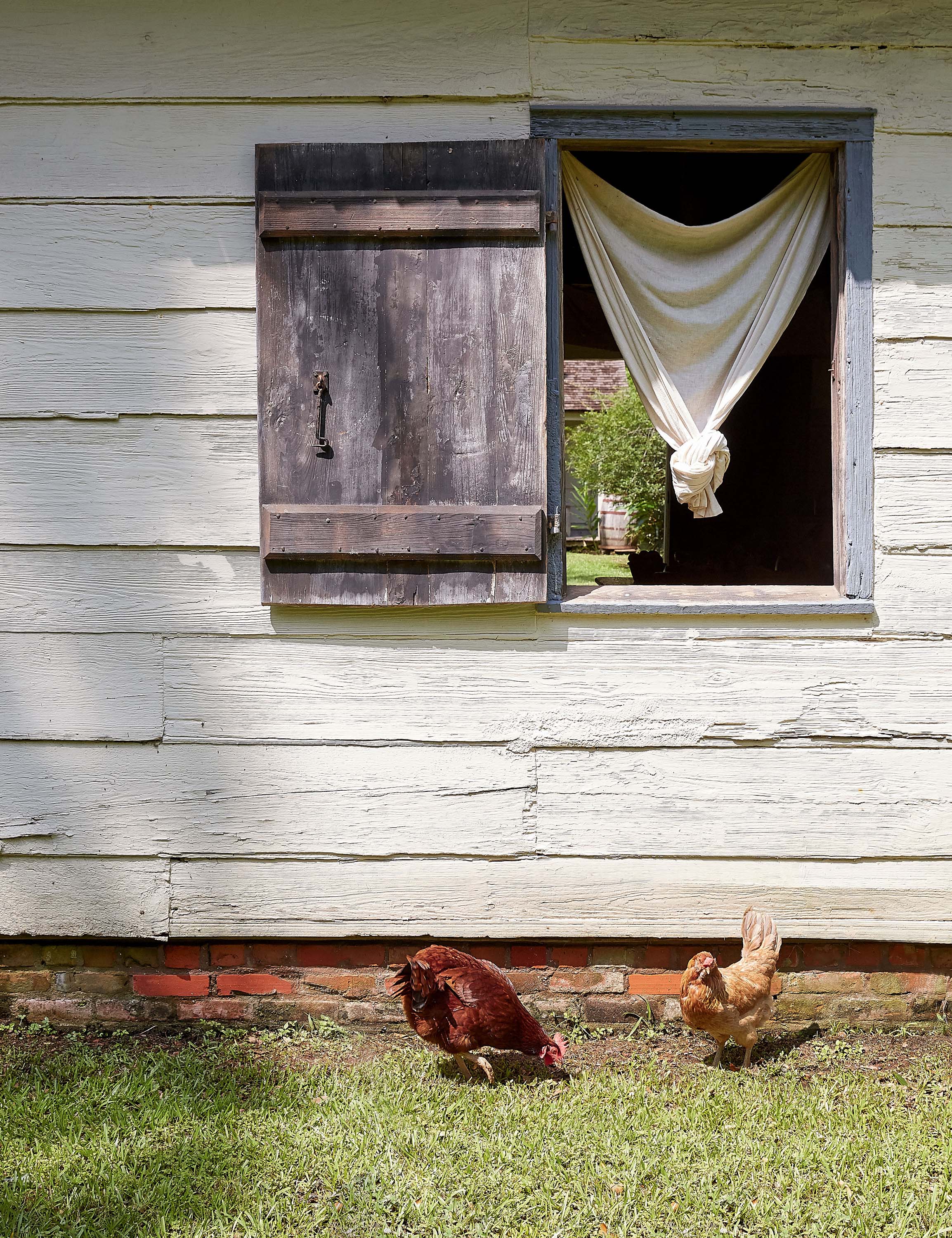
Photo: William Abranowicz
The Holdens’ free-range chickens.
The Holdens’ Louisiana roots run deep—Pat can trace her family tree all the way to the 1700s in Pointe Coupee. A mutual friend introduced the two in Baton Rouge, and as newlyweds in the 1960s, Pat was a social worker and Jack studied medicine. “We needed something to do together, a cause we cared about,” Pat says. While Jack completed his residency in New Orleans, the two enrolled in night classes at Tulane University with the notable Louisiana architecture professor Samuel Wilson Jr. “Historic preservation was just an idea on the cusp at that time,” Jack says. Wilson advocated for the idea of tout ensemble—everything together. “He showed us that everything was related, that furniture and dishes were part of a house.” Wilson laid the foundation for the couple’s conviction that historic items are meant to be arranged together and even used, not set aside with museum formality. Plates should be in a kitchen; beds should have sheets; a desk should have books and paper. “It’s not just about things, but about the invisible ties that connect everything, and everyone, to each other,” Pat says.
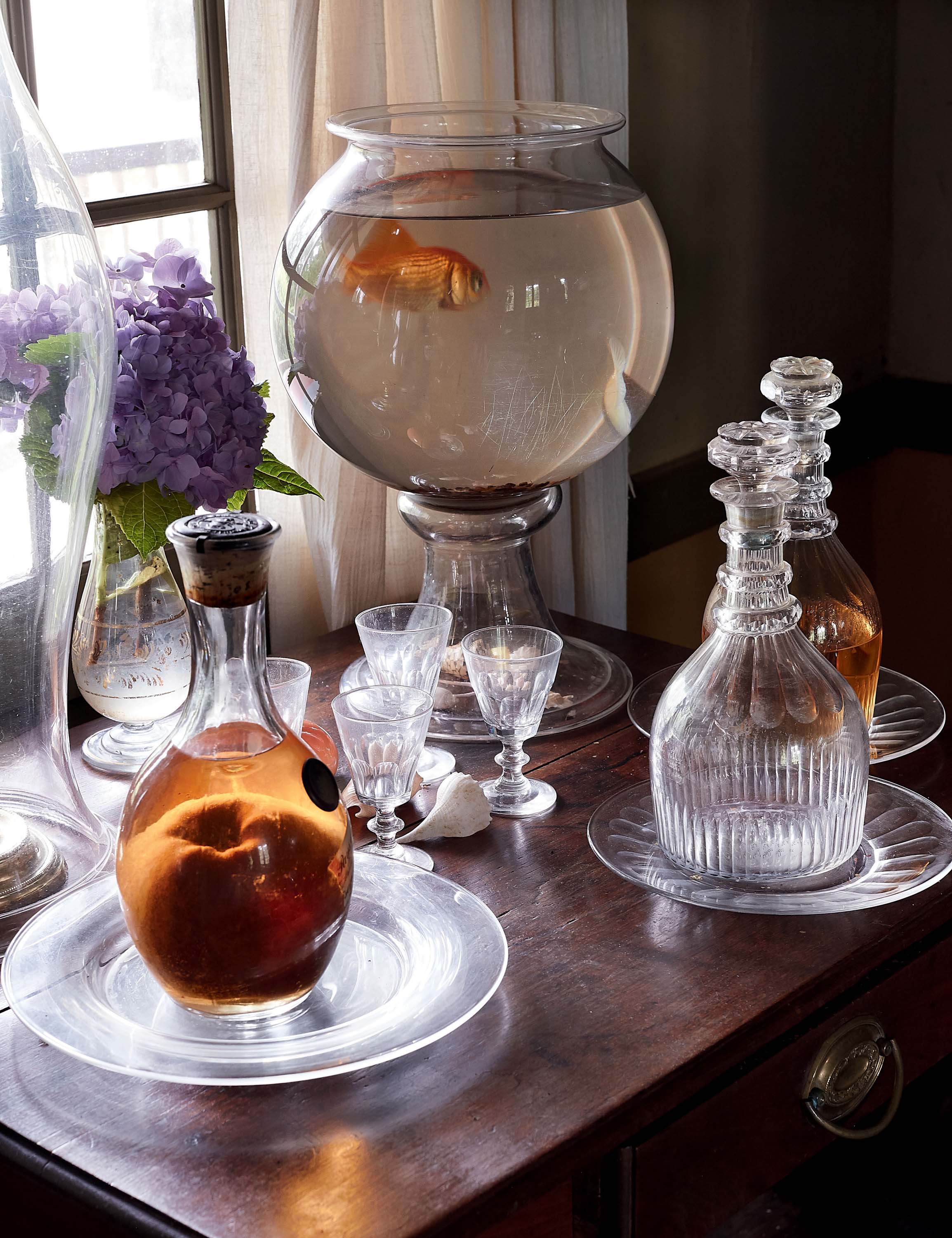
Photo: William Abranowicz
English blown-glass decanters, circa 1820, and a French apple brandy decanter.
In 1974, the couple purchased these seventy-five acres on Bayou Chenal off of an oxbow lake that was once part of the Mississippi River. Then, by developing a first-name-basis relationship with antique dealers countrywide, and especially by traveling, knocking on doors, and stopping at historic homes throughout Louisiana, the Holdens assembled their collection. Pat recalls some of the bartering they did: with the couple who traded a heap of wooden picket fencing for help rewiring their house; with the homeowner who needed his roof patched and gladly exchanged a dusty old Acadian armoire for materials. While forging a community with their neighbors, the Holdens arranged their acquisitions into vignettes of early Southern lives—in nooks and corners, on tables and in cabinets, in entire rooms and homes.
In Maison Chenal, Jack opens a door to reveal shelves of blankets in stripes of white cotton, brown cotton, and hand-dyed indigo. “This is the physical expression of Acadian culture,” he says. Pat elaborates: “Each piece and stripe and color—it shows you the human need to express individuality, not just to make a blanket, but to make it your own.” She opens an armoire filled with everything a Louisiana bride would require to start a new home. “This shows me the love of a mother, who would make each blanket, sheet, and pillowcase her daughter would need for her life.”

Photo: William Abranowicz
Acadian blankets.
The Holdens’ own children’s lives were formed here. The Louisiana folk artist Clementine Hunter, a family friend, painted pieces for all three of their children, marked by her big, colorful brushstrokes. “Once, after we had been part of exhibits in Louisiana,” Pat says, “the Smithsonian approached us about their exhibition on furniture used in everyday life throughout American history. Our daughter Chanler had a little classic Creole chair they were interested in. So she signed all the papers herself and got it ready for the museum when she was eight years old.” Another time, fascinated by the family’s textile collection, their son slept on an antique mattress stuffed with crackling corn shucks. “Mama, I love my bed,” Pat recalls him telling her. “But I think it’s too loud.” She laughs at the memory. “Who we are today is part of a long line. Physical things tell us we are part of something bigger than the past or present.”

Photo: William Abranowicz
An 1836 portrait by the French artist Jean Joseph Vaudechamp, who often visited New Orleans to paint, hangs in Maison Chenal’s master bedroom.
Across the road, beyond a field of purple-topped clover, sits the LaCour House. Its wide-open rooms and its size, much larger than typical homes in the area, hint that it might once have been part of a 1700s fort at Pointe Coupee. A pair of lizards two-step through the grass as Pat approaches LaCour. Beneath an expansive hipped roof, bousillage, an early building material of dried earth and moss, fills the timber framing.
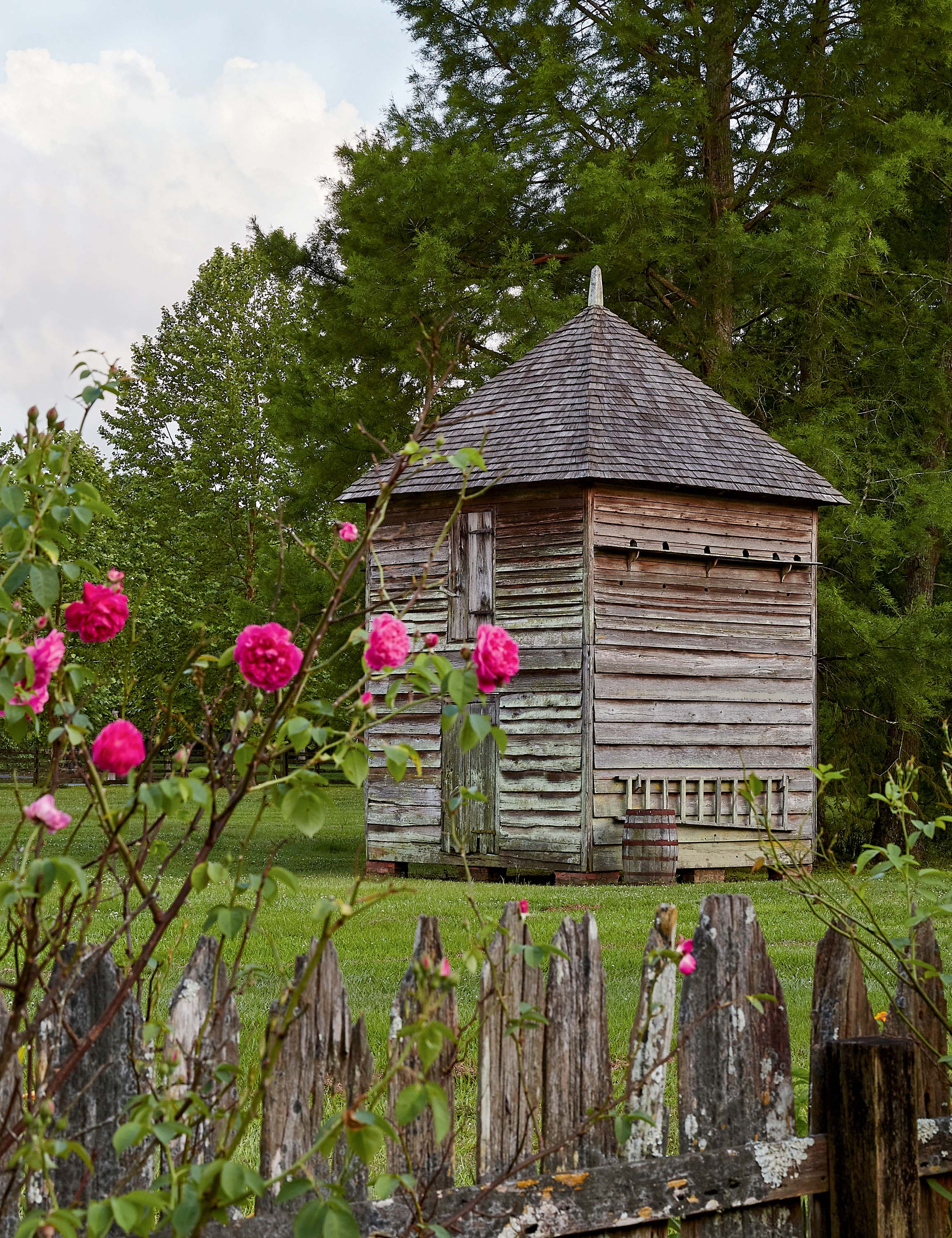
Photo: William Abranowicz
The pigeonnier.
For decades, the Holdens had driven past this giant structure, which at some point had been turned into a home. Then, in the 1980s, a company bought it with the intention of converting it into a recreated sugar plantation house. When the group began moving the 121,000-pound behemoth eighty miles south to the New Iberia area, part of it collapsed on a back-road bridge. The damaged home reached New Iberia and underwent a few repairs, but it was ultimately abandoned until Jack and Pat negotiated for its purchase and relocated it—carefully—back to Pointe Coupee Parish.
“We don’t advocate moving old buildings willy-nilly,” Pat says. “Every house we’ve moved was threatened with oblivion in some way—consumed by poison ivy vines or termites or slated to be torn down. These buildings would all probably not exist anymore if we hadn’t moved them here.” She leans down to see the hand-carved Roman numerals on the cypress sill, details that helped the couple reconstruct the house beam by beam. “Every little mark tells you something about what was here, what this was for.”
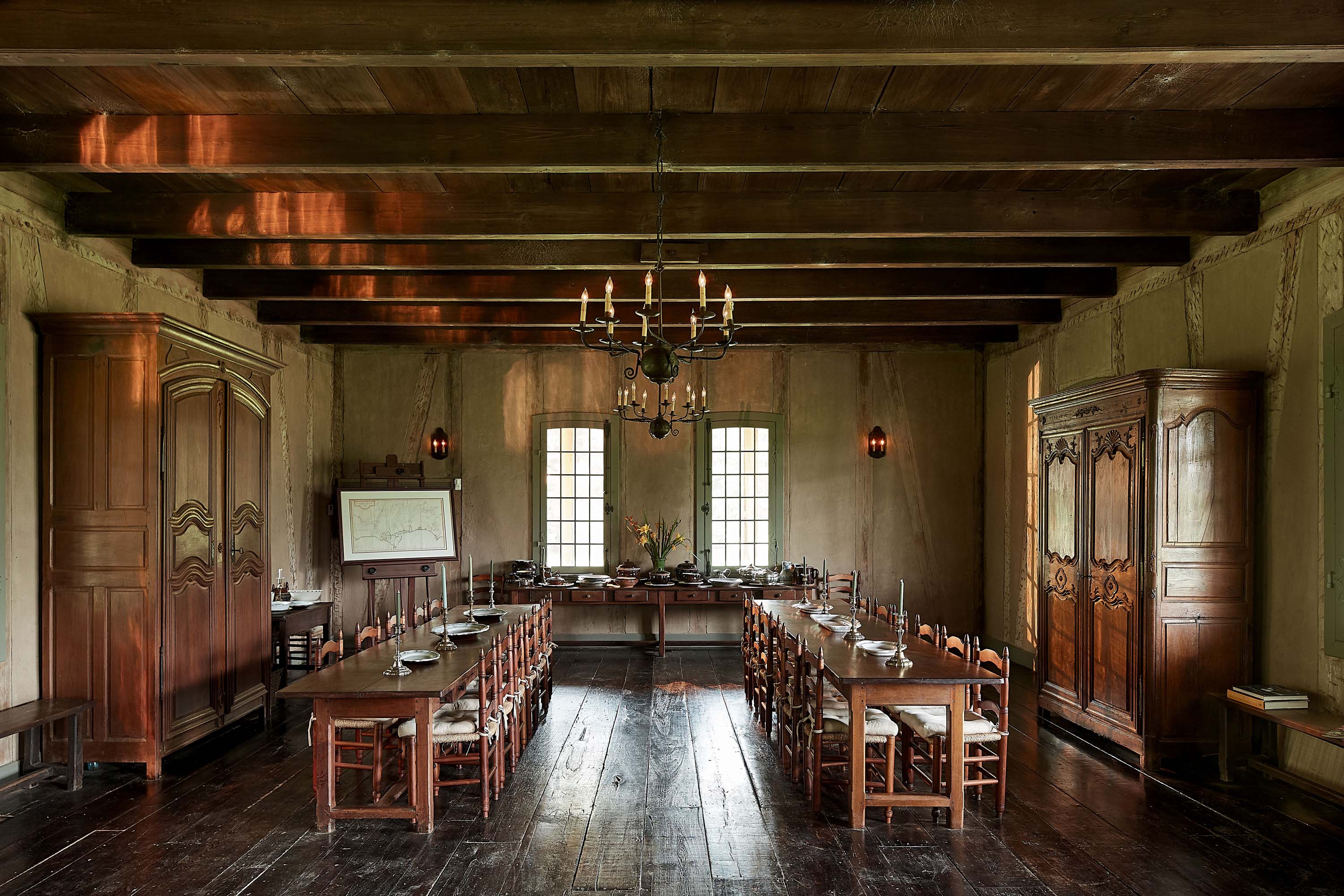
Photo: William Abranowicz
The salle à manger, or dining room, in the LaCour House holds long tables once used in New Orleans’ Ursuline Convent.
Inside, handsome furniture salvaged from the old Ursuline Convent in New Orleans anchors the vast dining room. In each long table, drawers pull open. “Every nun would have had a drawer with her own family silver,” Pat says, “or she’d use these, Ursuline’s spoons and forks, which were based on heavy French designs and made by Louisiana silversmiths.” A giant armoire features traditional French patterned carvings, made from American walnut and cypress from this part of the world.
At Christmas, the Holdens entertain three dozen family members in the daylight-flooded room, using cutlery and serving platters older than the oldest relative at the table. When Hurricane Katrina devastated New Orleans, the couple hosted refugees and visiting journalists there, tucking them under Louisiana cotton in Acadian beds. History lives at Chenal, and people do too.
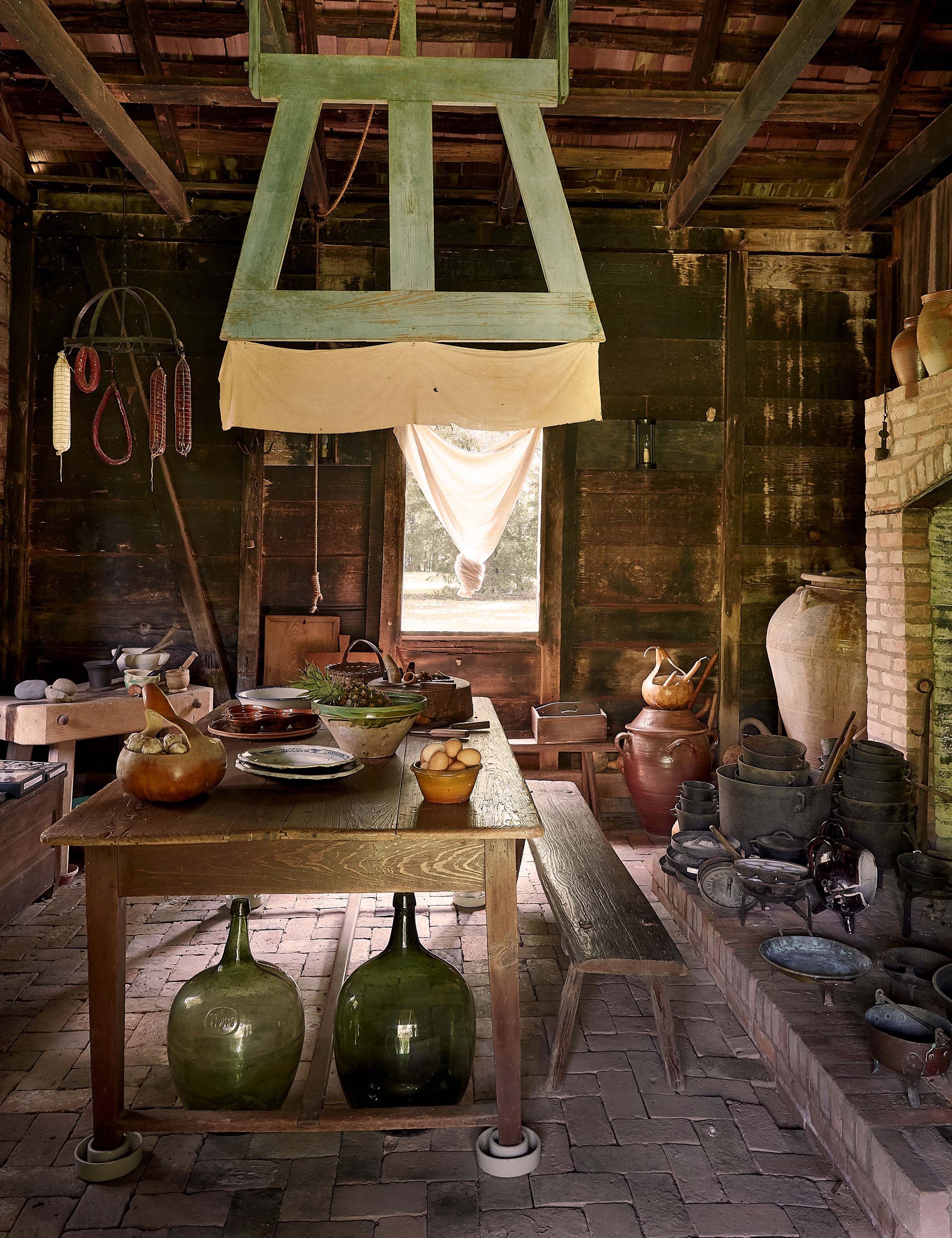
Photo: William Abranowicz
A punkah ceiling fan in Maison Chenal’s kitchen building keeps the flies away.
A brood of grandchildren brings joy to Jack, who is eighty-two, and Pat, who will turn eighty in September. But the Holdens are hungry for a plan. MESDA’s affirmation that the Chenal properties are a singular example of Louisiana material culture is one of many accolades. The couple have brainstormed with museums, historical societies, and universities about how to protect their life’s work and make sure it’s handed gently to the next generation of locals and scholars. They have also catalogued and digitized details of their collections and are considering forming a non-profit or a foundation to carry the place into the future. “The Holdens have the potential to create a regional study center for French Creole material culture,” Robert Leath says, “where people can actually touch history.”
Bayou Chenal rests alongside the False River, a bend of water that once flowed as the Mississippi and is now set apart since the river changed its course. Earth and water shift with time. The Holdens built a bridge across the bayou, and as Pat strolls the boards, she describes a family wedding at which her niece also walked on them over the water, veil trailing up the steps to a tiny island. With each turn comes another memory: Here, Jack once planted a riot of irises in the shade. The dirt has drifted, and the trees have grown, Pat explains, but somewhere around there also lie two family time capsules, buried decades ago, and she chuckles wondering who might find them and what they might hold. “All these old things are not about returning to the past or idolizing ‘the good old days,’” she says. “They remind us we’re part of a continuum of people. And we have an obligation to think of those who come after us.”


